#sesshu foster
Quote
The United States was at war when we were growing up, as we came of age, during our young adulthood, throughout our lifetimes, and after we died. The wars would never stop, it was too late for that now. People didn’t mention it. It wasn’t worth thinking about. United States equals WAR. So? They got Mexicans to fight in the wars and deported them afterward. Some wars, if you blinked you missed them. Grenada. Panama. Of course, the industrial-military complex conducted full-blown wars in Iraq and Syria and Afghanistan – and those soldiers, privatized mercenaries and civilian contractors, didn’t want to work in KFC and Popeye’s frying chickens like Mexicanos, though they did eat mountains of chicken.
Sesshu Foster & Arturo Ernesto Romo, Eladatl: A History of the East Los Angeles Dirigible Air Transport Lines
11 notes
·
View notes
Text



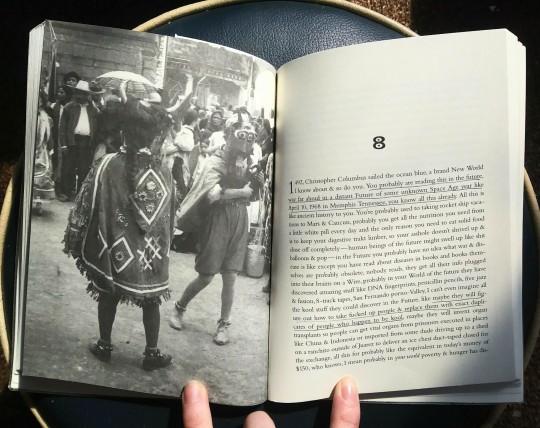


Atomik Aztex by Sesshu Foster. Photographs by Ignacio Bravo, book design by Elaine Katzenberger, Cover design by Yolanda Montijo. Published 2005.
#sesshu foster#ignacio bravo#elaine katzenberger#yolanda montijo#native american fiction#native american scifi#scifi#science fiction#alternate timeline#atomik aztex
3 notes
·
View notes
Text
Signaling Through the Flames: Sesshu Foster, Author of World Ball Notebook, Atomik Aztex, and ELADATL (forthcoming)
During this time of uncertainty, we’ve asked City Lights authors how they’re doing, what they’re reading, and any advice they have for our community. Their responses have been very inspiring to us, and we hope that sharing them will inspire you as well.
“Signaling Through the Flames” gets its title from Lawrence Ferlinghetti’s timeless work, Poetry As Insurgent Art, which beings with the line, “I am signaling you through the flames …” This line is, in turn, taken from Antonin Artaud in his landmark book The Theatre and Its Double, in which he says “If there is still one hellish, truly accursed thing in our time, it is our artistic dallying with forms, instead of being like victims burnt at the stake, signaling through the flames.” Follow the hashtag #SignalingThruTheFlames across all our platforms on social media to follow the complete series.

City Lights: Where are you?
Sesshu Fsoter: Alhambra, CA
What books make you feel inspired?
Too many to list, but The Collected Poems of Bertolt Brecht, Postcolonial Love Poem by Natalie Diaz, Little Million Doors by Chad Sweeney, and many, many others.
What gives you hope at the moment?
I got up to a beautiful sunrise. So, from the first! Then I had to run to my job site, pick up a few things, the janitors were blasting Mexican pop music from one office, and in the hall mariachi music! They were drowning out each others' music or listening to two channels at once, swabbing down the walls with mops and disinfecting the building! Then. I drove a few minutes to City Terrace and took snapshots of the neighborhood for Boom Magazine, which wanted them for their artist, to produce a piece to accompany a City Terrace postcard poem I wrote. Clouds flowed across the sky. The sun rose over the hills of East L.A. The houses were sleeping. I said hi to one guy walking his dog. The air was sweet; the ground is wet from the last rains. Light filled the hills.
Any advice to share?
You deserve protection, you deserve paid sick leave, you deserve health care, you deserve the bailout. You and yours deserve more. Don't be denied.
***
Sesshu Foster has taught composition and literature in East L.A. for 20 years. He's also taught writing at the University of Iowa, the California Institute for the Arts and the University of California, Santa Cruz. His work has been published in The Oxford Anthology of Modern American Poetry, Language for a New Century: Poetry from the Middle East, Asia and Beyond, and State of the Union: 50 Political Poems. His most recent books are Atomik Aztex, a novel; World Ball Notebook, poetry; and City of the Future, poetry. His forthcoming book with City Lights is ELADATL, written with Arturo Ernesto Romo. Visit his blog, East Los Angeles Dirigible Air Transport Lines.
7 notes
·
View notes
Video
youtube
The Entire Universe- Just Don't
Things to do in Los Angeles this weekend (4/26-4/29/18)-
Thursday
Celebrate Giorgio Moroder's birthday with a DJ set from the man himself as well as performances by Roy Ayers, YACHT and more at the Globe Theatre
Tonight both MOCA locations offer free admission and it’s a good opportunity to see the excellent exhibition Real Worlds: Brassaï, Arbus Goldin
Yamashiro’s Night Market is back- take a shuttle from Mosaic Church (Hollywood and La Brea) and enjoy a drink and a beautiful view of Hollywood
Goon are playing at The Hi Hat with The Lentils, Girl Friday, and Folies opening
Friday
The Entire Universe are playing a free show at Zebulon with Moon Honey and FACIAL opening
ELOHIM are playing at The Fonda Theatre
James Supercave is playing at the Bootleg Theater with Pompeya, and Lukas Frank opening
Penguin Prison is playing at the Teragram Ballroom with Little Monarch and Dylan Gardner opening
Friday through Sunday
Grand Park is hosting Our L.A. Voices: Spring Arts Festival, a free 3-day performing and visual arts showcase, including dance, music and theatre performances, a public marketplace for local artists, youth concerts and more
Saturday
Blum & Poe is hosting a free public conversation on artist Robert Colescott with panelists Erin Christovale, Bridget R. Cooks, and Joe Lewis
LACMA is hosting Readings by Rocío Carlos, Sesshu Foster, Carribean Fragoza, and Stephanie Guerrero, with the writers reading their works in response to the exhibition A Universal History of Infamy: Those of This America (this free program will take place off-site at Charles White Elementary School)
ARRAY @The Broad is screening The Watermelon Woman and Jewel's Catch One with a conversation moderated by Dear White People creator Justin Simien with the filmmakers, Cheryl Dunye and C.Fitz, immediately following The Watermelon Woman screening ($30 tickets include admission to The Broad)
The Smokers Club Fest takes place over two days at the Queen Mary in Long Beach and today's lineup includes- Wiz Khalifa, Schoolboy Q, 2 Chainz, Snow Tha Product, Blocboy JB, and more
Das Mörtal is performing at Union Nightclub
Sunday
Jackalope Indie Artisan Fair returns with its free event to Pasadena (also Saturday)
The Secret Society of The Sisterhood join together at The Masonic Lodge at Hollywood Forever to tell stories- performers tonight include Aparna Nancherla, Kirsten Vangsness, and Suzi Gardner (of L7)- proceeds from this event will go to Women Against Gun Violence
The Smokers Club Fest takes place over two days at the Queen Mary in Long Beach and today's lineup includes- Kid Cudi, Mac Miller, Isaiah Rashad, Flatbush Zombies, The Underachievers, Juicy J, Earl Sweatshirt, Dave East and more
Wild Pink and Night Shop are opening for Dana Buoy at Resident
#the entire universe#james supercave#giorgio moroder#YACHT#roy ayers#the smokers club fest#aparna nancerla#wild pink#das mortal#cheryl dunye#c.fitz#sesshu foster#blum and poe#robert colescott#suzi gardner#the secret society of the sisterhood#MOCA#LACMA#los angeles events#grand park#los angeles#music#playlist
1 note
·
View note
Text
one of the beautiful things about art or writing can be that it comes from you, represents you in the crowd, bears your handprint, it tells your story, it’s personal in the indifferent universe, it’s fun in such grim times, the hopeful thing that is your own gift to give. when you survive as an artist or writer, you will produce art and writing that will help you to survive.
—Sesshu Foster
0 notes
Text





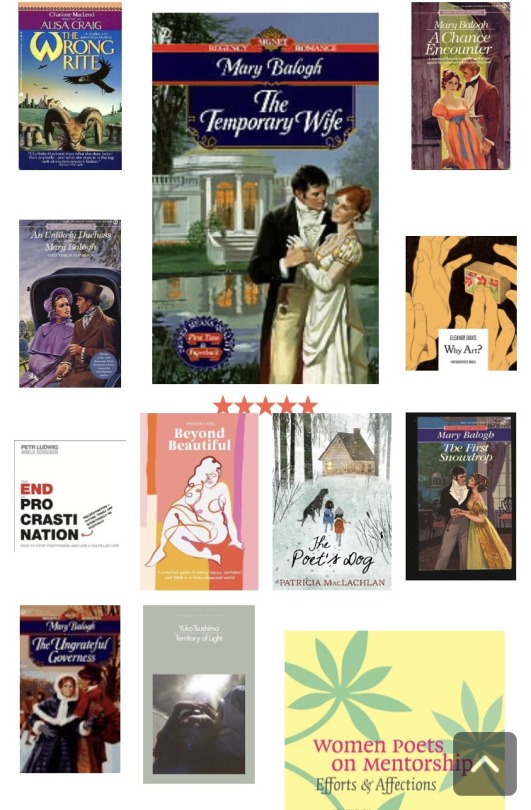
In 2019, I set myself a goal of 75 books because in 2018 I read over 100 but it felt like a chore, like a race, and I wanted to slow down and enjoy some books more.
I ended up reading 78 which includes volumes of manga, a lot of poetry books, het and queer romance novels, rereading a favourite mystery series, and discovering some children’s books and verse novels, and the occasional non-fiction. (Technically 79 but one was a poetry chapbook not in goodreads.)
The number of course does not include fanfic, which I have been reading less of, but still come back to, both old favourites and new ones. That Pride and Prejudice fanfic was a standout... and I’ve been enjoying shorter pieces based on my current fandom obsession (Mo Dao Zu Shi/The Untamed)
My favourite discoveries are all in the realm of children’s writing:
The Day You Begin by Jacqueline Woodson
The Poet’s Dog by Patricia MacLachlan
The Night Garden by Polly Horvath
And my favourite poet is from the last book I finished, Filipino writer Conchitina R. Cruz. This year I also discovered the work of Sesshu Foster and local writer Susan McCaslin.
And new author to read more of: Cat Sebastian’s queer romances!
4 notes
·
View notes
Text
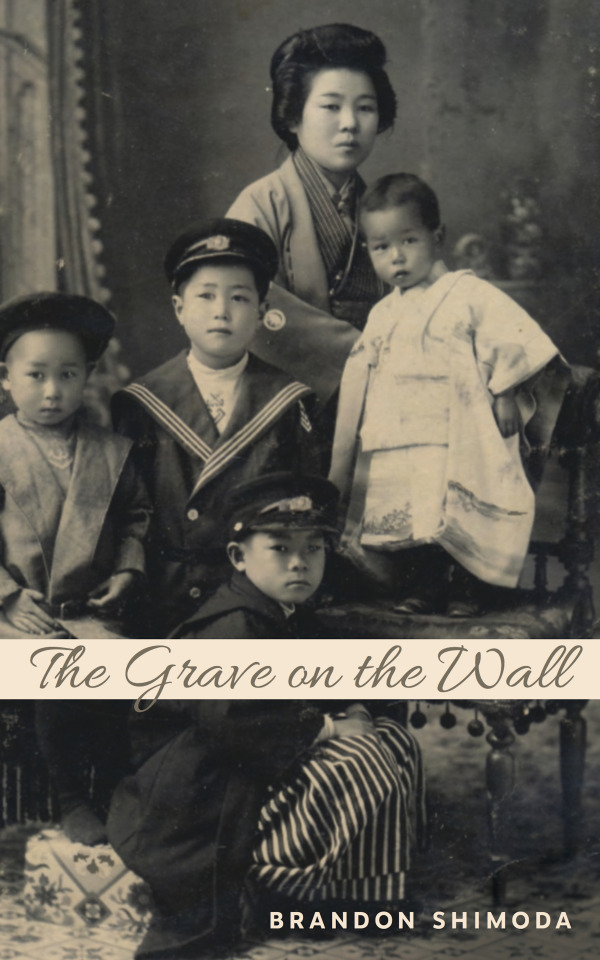
The Grave on the Wall—an ancestral memoir/book of history, memory, mourning, and forgetting / recipient of the PEN Open Book Award—available at City Lights.
Read excerpts in: Entropy, Evening Will Come, Fanzine, Harper’s, Lit Hub, The Margins (Asian American Writers’ Workshop), Nat. Brut, The Offing, The Paris Review, and Tricycle.
Read the Nagasaki and Hiroshima chapters.
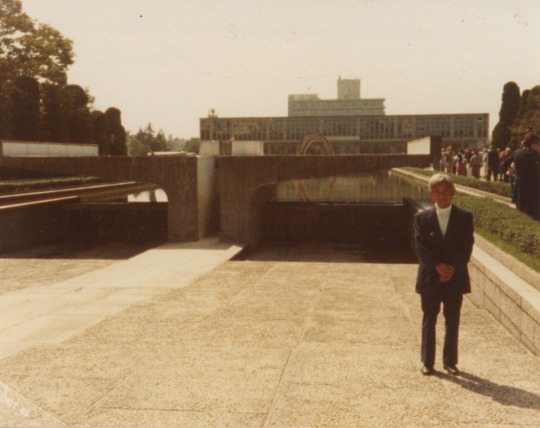
"Here we learn that to attempt to recuperate an erased past is an obsessive task, following faint threads into places of memorial, tragic time, aging bodies—the fissures, gaps, and scars of which can never be fulfilled. In the void between, ghosts emerge and disappear as dreams. In a weaving meditation, Brandon Shimoda pens an elegant eulogy for his grandfather Midori, yet also for the living, we who survive on the margins of graveyards and rituals of our own making." —Karen Tei Yamashita, author of Letters to Memory
"In The Grave on the Wall, Brandon Shimoda has conceived a moving monument to his grandfather made not of stone but of fractured memories and dreams, fairy tales and family photographs, pilgrimages to alien enemy internment camps, burial grounds, deserts, and the Inland Sea, all bound together by lambent strands of ancestral and immigrant histories. Within this haunted sepulcher built out of silence, loss, and grief—its walls shadowed by the traumas of racial oppression and violence—a green river lined with peach trees flows beneath a bridge that leads back to the grandson.” —Jeffrey Yang, author of Hey, Marfa: Poems
"Sometimes a work of art functions as a dream. At other times, a work of art functions as a conscience. In the tradition of Juan Rulfo's Pedro Páramo, Brandon Shimoda's The Grave on the Wall is both." —Myriam Gurba, author of Mean
"The legacy of past generations—though we embody them in some way, so often unknowingly replicate their gestures, tones of voices or facial expressions, maybe the curl of a lock of hair—that inheritance so often goes untold, except that Brandon Shimoda begins here accounting for it, beyond the borders of memory and forgetting, beyond the known and unknown. Shimoda intercedes into the absences, gaps and interstices of the present and delves the presence of mystery. Gratitude to Brandon Shimoda for taking on the mystery which only literature accepts as the basic challenge." —Sesshu Foster, author of City of the Future
“The Grave on the Wall among other things reads as a feat to me, as if something truly massive were fit into two hundred pages, without compromise or shortcut or disassembly or surgery. As if an impossible and entire monolith were fit between the covers. I imagine a thoughtfully planed beam of hardwood from a temple otherwise destroyed. Both locating and dislocating us, the marvel of its accomplishment hovers ominous and irreducible, a whole and deep act or care.” —Nabil Kashyap, author of The Obvious Earth, at Full Stop
“The Grave on the Wall is a passage of aching nostalgia and relentless assembly out of which something more important than objective truth is conjured—a ritual frisson, a veracity of spirit. I am grateful to have traveled along.” —Trisha Low, author of Socialist Realism, at The Believer
"Shimoda is a mystic writer. He puts what breaches itself (always) onto the page, so that the act of writing becomes akin to paper-making: an attention to fibers, coagulation, texture and the water-fire mixtures that signal irreversible alteration or change. Does this book end? Is there a sentence that closes it? Or does it keep being written and forgotten then written again, each time a reader opens it (the book) for the first time?" —Bhanu Kapil, author of Ban en Banlieue
"If someone asked me what a poet's history might look and read like, I would say Brandon Shimoda's The Grave on the Wall. It is part dream, part memory, part forgetting, part identity. It is a remarkable exploration of how citizenship is forged by the brutal US imperial forces—through slave labor, forced detention, indiscriminate bombing, historical amnesia and wall. If someone asked me, where are you from? I would answer, from The Grave on the Wall." —Don Mee Choi, author of Hardly War
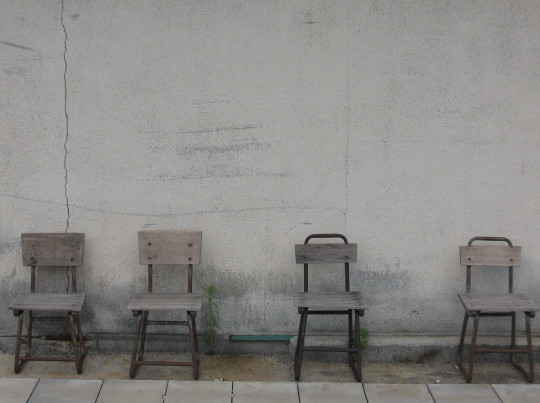
4 notes
·
View notes
Text
8 SPD Books about the Dilemma of Prison

As the summer wanes the heat is turning up on the Prison Industrial Complex! Prisoners and supporters across the country are organizing a National Prison Strike starting August 21st and continuing through September 9th. We put together a few books that reflect the struggles and lives of those incarcerated inside to spot light their contribution to our literary community.
1. Come to Me by Sin Soracco (Ithuriel's Spear)
“Sin Soracco is a unique voice among crime novelists. She doesn’t write about private eyes and her stories are not plot-driven, but she does pull the reader into the off-kilter lives of women and men living outside mainstream society. Having spent time in California jails and prisons, Soracco is intimately acquainted with milieus like the ones her convict and ex-convict characters inhabit. They are far from the mostly lily-white preserves of too much U.S. literary fiction, and far more interesting.“ - Ben Terrall, Counterpunch.com
2.Inside/Out: Selected Poems by Marilyn Buck (City Lights)
“ With the grace of Lucille Clifton and the force of June Jordan, Buck establishes undeniable presence. Courageous and compelling—make room for some new “survival code.”“ - Jeffrey Cyphers Wright, The Brooklyn Rail
3. Locked Out: Voices from America’s Second Prison Edited by Jesse Wiese (Couterpath Press)
“ While many people find hope and a new identity behind prison walls, they lose it a few steps past the prison gate when faced with seemingly insurmountable barriers that prevent them from fulfilling their potential. In effect, these men and women are consigned to a "second prison" that curbs rehabilitation, diminishes success, denies them the opportunity to make meaningful contributions, and minimizes their human value.”
4. The Cutting Four-Piece: Crime And Tragedy In An Era Of Prison-Overcrowding by Scott Thomas Anderson (Coalition for Investigative Journalism)
“ Prison culture is an entity that feeds itself with rage, indifference and the force of addiction. It is a culture that's born in the streets, germinates behind bars, and then flows back into neighborhoods as ongoing cycles of victimization. The U.S. currently has the most overcrowded prisons in the world; some states are combating the legal and political fallout from this reality by enacting new experiments for handling criminals. But behind the clichéd expressions from lawmakers, oversimplified narratives from officials and fragmented reporting by the media, truths around America's justice system lie out of sight for most citizens, purposefully hidden behind curtains of overwhelming failure. Many who work within the system understand its dysfunction comes not only from the confusing nature of criminality, but also from laws tied more to bureaucratic advantage and financial gain than the truth of what is happening in the streets. In THE CUTTING FOUR-PIECE, award-winning journalist Scott Thomas Anderson builds on his years as a newspaper crime reporter to probe the link between prison overcrowding, criminal thinking, addiction, mental illness and policy born from political exploitation. “
5. Poems from the Prison Diary of Ho Chi Minh by Ho Chi Minh Translated by Steve Bradbury (Tinfish Press)
“ It is said jails are finishing schools for criminals. A young lawbreaker goes in and learns all the tricks of the trade. Something analogous is described in this poem. The lockup becomes a military training camp in which the strategies for guerrilla warfare are debated and mastered. “ - Jim Feast from Jacket Magazine
6. Prison/Culture Edited by Sharon E Bliss, Kevin B. Chen, Steve Dickison, Mark Dean Johnson, & Rebeka Rodriguez (City Lights)
“Over two million individuals are behind bars in U.S. prisons, living in isolation from their families and their communities. PRISON/CULTURE investigates the culture of incarceration as an integral part of the American experience through a compilation of stunning and often heartrending artwork by inmates as well as by artists on the outside, such as Sandow Birk and Keith Antar Mason, who address incarceration, criminal profiling, wrongful conviction, prison labor, and the death penalty. The book also includes essays on prisons and prison art by Angela Y. Davis and Mike Davis, and poetry by Amiri Baraka, Ericka Huggins, Luis Rodriguez, Sesshu Foster, and more.”
7.Memoirs from a Swiss Prison by Ignazio Silone (Cross Cultural Communications)
“Ignazio Silone has played an important role in modern history. A founding member of the Italian Communist Party (PSI), he was expelled from the Communist International in 1927 for refusing to back Stalin in his vilification of Trotsky. Forced into exile in Switzerland, Silone took to writing—novels, plays, satirical essays and theoretical works—while at the same time funneling money to colleagues in the anti-Fascist resistance in Italy. In this memoir, written in 1942 while in prison (and nicely translated here by Pugliese, currently at work on a biography of Silone), Silone tries to clear his name from nasty charges made against him: of trying to foment violence and subjugate sovereign states. He does not seek absolution—he considers imprisonment to be an honor and a sign of devotion—but rather an honest rendering of history” - Publishers Weekly
8.Desperate Inscriptions: Graffiti from the Nazi Prison in Rome 1943-1944 by Stanislao G. Pugliese (Bordighera Press)
“ Pugliese's thoughtful narrative, accompanied by black-and-white photos by Lianna Miuccio, documents the lives of such antifascist prisoners as Arrigo Paladini, who wrote on the wall as he was dying, ""There is nothing that can give the joy of a beautiful death as the consciousness of having served the country until the last breath of life."" “- Publishers Weekly
7 notes
·
View notes
Quote
Because there were a million reasons not to do anything and only like four or five reasons to actually do anything, and people avoided that.
Sesshu Foster & Arturo Ernesto Romo, Eladatl: A History of the East Los Angeles Dirigible Air Transport Lines
9 notes
·
View notes
Text
"Sesshu Foster and Arturo Romo have the antidote for the erasure of East L.A." in Image, The Los Angeles Times magazine (May 2021).

0 notes
Text
5 Questions with Sesshu Foster, Co-Author of ELADATL

Sesshu Foster taught composition and literature in East L.A. for over 20 years, and at the University of Iowa, the California Institute for the Arts, and the University of California, Santa Cruz. His work is published in The Oxford Anthology of Modern American Poetry, Language for a New Century: Poetry from the Middle East, Asia and Beyond, and State of the Union: 50 Political Poems. His most book recent is ELADATL: A History of the East Los Angeles Dirigible Air Transport Lines, co-authored with Arturo Ernesto Romo and published by City Lights. His other books include City of the Future, World Ball Notebook, and Atomik Aztex.
Sesshu and Arturo are in conversation with Carribean Fragoza celebrating the book launch of ELADATL in our City Lights LIVE! discussion series on Tuesday, April 27
****
Where are you writing to us from?
I’m writing you from Tongva land, facing east over the San Gabriel Valley, east of the L.A. River.
What’s kept you sane during the pandemic?
Same things as always—my family, friends, and people. Poetry and books. I’m grateful for all you folks doing what you do best. I only do good if other people are doing well. And we’re always walking and hiking. Yesterday we hiked to Owen Brown’s gravesite on a hilltop in the San Gabriel Mountains. Owen Brown, son of John Brown, was one of the only survivors of John Brown’s raid on Harper’s Ferry. He and his brother Jason kept a low profile after the Civil War as sheepherders, living in a mountain cabin. When he died in Pasadena in 1889, two thousand people attended his funeral. His tombstone was stolen once, recovered and is temporarily replaced by peeling plywood signs. But his bones are there.
What are 3 books you always recommend to people?
One size doesn’t fit all. For four year olds and their parents, I might recommend Niño Wrestles the World by Yuyi Morales. For hungry intellectuals and young writers, I could recommend Compression & Purity by Will Alexander. For people who don’t know them, what about America Is in the Heart by Carlos Bulosan, or the Collected Poems of Bob Kaufman?
Which writers, artists, and others influence your work in general, and this book, specifically?
I like the University of California edition of Moby Dick by Herman Melville. The nautical illustrations by Barry Moser (page 74 includes a diagram of sections of a whaling ship, page 106 presents a “windlass turned by handspikes” for the reader who lacks a mental image of a windlass, page 147 depicts porpoises referred to in the text, etc.) which are helpful to the 21st century landlocked reader. Some features of ELADATL are analogous to these. Of course, airships are analogous to sailing ships, which are themselves also metaphorical.
Of course, the main influence on ELADATL is the work of my collaborator, artist Arturo Ernesto Romo, whose ideas of folding (prismatic or origami-like), resistance or interruption, and the active participation of the viewer (or, in this case the reader) format the structure of this narrative. Also present, folded into and prismatically reflecting the narrative are images and art work by Arturo Romo. Arturo told me that his illustrations that grace each chapter were influenced by Hugo Gellert, and I know the collaborative practice of public performances Arturo and I did—-and our community-based aesthetics, which is refracted in ELADATL—-have been influenced by the Chicano collective Asco (Harry Gamboa, Gronk Nicandro, Patssi Valdez, Willie Herrón and others). As well as by the muralists of East L.A. and other artists of the Chicano movement.
If you opened a bookstore, where would it be located, what would it be called, and what would your bestseller be?
You know, I don’t want to touch this question. I’m already found mostly inside books I’ve written. I’d be frightened of having my own bookstore, I might wander into the stacks of my own bookstore and never be seen again. Even though Lawrence Ferlinghetti and Larry McMurtry did it! Recently I was in Bellingham, Washington state, and found the Alternative Library, co-founded 14 years ago as a free anarchist lending library, by “Future” (he told me his name was, as he welcomed a new volunteer starting her first day). Santa Ana writer Sarah Rafael Garcia stocks several “Libromobile” book carts around Orange County in Southern California, which gives me the desire to take that idea on the road, with a step van full of books I’d drive to places like the Coachella Valley, or anywhere where people—especially kids—need books. There’s a lot of book deserts. I don’t know what I’d call it. I’d call it all kinds of names if it broke down and didn’t make it to the next place. The best seller? Everyone Poops by Taro Gomi? Niño Wrestles the World by Yuyi Morales? Little Fur Family by Margaret Wise Brown? Make them readers and let the kids decide.
9 notes
·
View notes
Video
youtube
Worn-Tin- Cycles
Things to do in Los Angeles this weekend (5/9-5/12/19)-
Thursday
LACMA is having a free screening of Raging Bull which includes a pre-screening conversation with producer/director Irwin Winkler and screenwriter Nicholas Pileggi
Destroyer is performing at Lodge Room
There is a free screening at the Japanese American National Museum of the documentary Masters of Modern Design: The Art of the Japanese American Experience, with a Q&A with the filmmakers and some of the people interviewed for the film to follow
As part of the Artists on Artists series at MOCA Grand Avenue, Miljohn Ruperto will be discussing the exhibition Open House: Elliott Hundley currently on view (free admission to the museum on Thursdays)
Al Green is playing at The Greek Theatre with Jessy Wilson
Downtown Los Angeles Art Walk is back with several galleries staying open late
Yamashiro’s Night Market returns to the hills above Hollywood tonight from 5-10pm- catch a free shuttle from Mosaic Church to get there
Friday
Worn-Tin is playing with Chaos Chaos at The Hi Hat
Composer Nico Muhly will be performing at The Theatre at Ace Hotel
There is a midnight showing of Office Space for its 20th Anniversary at Vista Theatre
Aquarium of the Pacific's free Shark Lagoon Nights is a chance to have a drink and snacks while checking out the sharks
Sugar Candy Mountain, Flaural, and Hooveriii are performing at The Echo
The Courtneys, Ian Sweet, and Automatic are playing at Zebulon
Phantom Planet are playing at Lodge Room
Saturday
ONE Gallery is hosting Rear Opening: A Performance Tribute to the Gutter Art of Stephen Varble, an afternoon program with performances by mutimedia artist Jason Jenn, aka the Troubadour Trixter, songs by Yozmit, the internationally celebrated visual artist, avant-garde party-artist, and singer/songwriter, and a musical tribute by Enrique Jesus Hernandez, the latinx, performance rock artist and domestic abuse activist. This program is presented in conjunction with the exhibition The Gutter Art of Stephen Varble: Genderqueer Performance Art in the 1970s, Photographs by Greg Day currently on view in the gallery.
At Armory Center for the Arts in Pasadena, artist Sandra de la Loza will be in conversation with poet, teacher and community activist Sesshu Foster in conjunction with de la Loza's exhibition Mi Casa Es Su Casa
Angelo De Augustine is playing at Lodge Room
Bad Suns are playing at The Wiltern with Carlie Hanson opening
Sunday
Eels are playing at The Theatre at Ace Hotel with Robert Ellis opening
East Los Angeles Art Walk takes place the second Sunday of every month and is a chance see work by local artists and support local businesses in the neighborhood
Illuminati Hotties are opening for American Football at The Regent
Bootleg Theater is showing Fritz Lang's 1929 film Woman In The Moon
Xeno & Oaklander, SRSQ, Chasms, and Fawns of Love are performing for Part Time Punks 14 Year Anniversary Show at the Echoplex
#worn-tin#angelo de augustine#stephen varble#ian sweet#sugar candy mountain#fritz lang#elliot hundley#miljohn ruperto#sandra de la loza#sesshu foster#bad suns#illuminati hotties#eels#moca#lacma#nico muhly#los angeles events#los angeles#music#playlist
0 notes
Photo
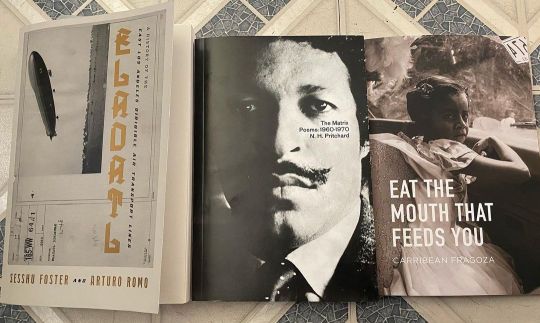
Next three #books up. #bookstagrammer ELADATL By Sesshu Foster & Arturo Romo The Matrix: Poems: 1960-1970 By N.H. Pritchard Eat the Mouth That Feeds You By Carribean Fragoza #CityLights (at City Lights Booksellers & Publishers) https://www.instagram.com/p/COaqYe7gOPf/?igshid=1j63uuuiqav3z
0 notes
Text
“one of the beautiful things about art or writing can be that it comes from you, represents you in the crowd, bears your handprint, it tells your story, it’s personal in the indifferent universe, it’s fun in such grim times, the hopeful thing that is your own gift to give. when you survive as an artist or writer, you will produce art and writing that will help you to survive.”
Sesshu Foster
3 notes
·
View notes
Quote
2. meet the people in your community. talk to the elders. find out how they have used intelligence and creativity to survive as human beings, which is to say, how did they survive creatively, intellectually? you want to survive as a human being, with creativity and intelligence.
3. which is also to say, how do artists and writers relate to and depend on people in the community? how do artists and writers relate to the tamale lady, community activists, labor organizers, busybodies, gossipers, to the executive secretary-treasurer of the los angeles county federation of labor, afl-cio, to homeless people, to the store clerk (to the video store clerk who wants to be a poet, and his co-worker, the video store clerk who wants to be a sculptor), to ghosts, to secret and forgotten individuals of the past, to kids (who in a few years will be completely different people)? how do artists and writers relate to members of informal underground organizations, gangs, to businesses, to soccer coaches in the city parks and teachers at the nearby school, to the retiree who grew up around here before there were houses, who used to teach judo in boyle heights and whose sister is a well-known artist, now he has alzheimer’s? many of these people know the secrets of survival and how to create community. their survival and their triumphs show that. the life of the community shows that, vibrating on those frequencies.
in short, i suggest that you must develop community, you must create for yourself community, beyond just a “support network.” recently, in the typical superficial style of l.a. magazine, like all such booster magazines devoted to only the glossiest, most superficial view of the city, a former l.a. times writer, scott timberg, wrote an essay called “leaving los angeles,” in which he mourns the cumulative effects of reagonomics and the destruction of the “middle class” in l.a., and particularly, his own deteriorated status. “as much as i like los angeles,” timberg writes, “which has been ‘home’ longer than my maryland hometown was—i’m no longer willing to be a third-class citizen here.”
(i say that america has always treated its artists and writers as third-class citizens.)
perhaps you, like timberg, grew up believing that you could move to any community anywhere and due to your education, your whiteness, your privilege, you could engage in a “middle class” life (where every activity is a business transaction allowed by your money and monetized skills, neatly performed within the snappy ideologies of capitalism) and generally not have to consider the struggles of people in your community—and specifically, the struggles of people who made the community more liveable for everyone, labor organizers, unions, community activists, peace activists, public service workers, intellectuals, artists and writers who came before you (from maryland or wherever). but those things that were good, those people who were good, who greeted you when you showed up, they worked for all that.
timberg writes (in the july 2015 l.a. magazine), “in older, more settled places, you’ve missed your chance to belong if you weren’t born there, but l.a. is different. you typically become a local a year or two after landing.” but timberg demonstrates nothing beyond a superficial idea of community, nothing more “local” than a list of tourist activities that he enjoyed about the city (“rhino records... canter’s... largo... we hiked in joshua tree, drove to remote, tree-shaded wineries...”). after “landing,” these “middle class” writers or artists live the detached life of tourists, who want a life served to them by the community. they want no part of the struggle to make that community.
it may be that you as writer or artist of the post-reagan era, do not have that privilege.
after the reagonomic destruction of the “middle class,” reducing many citizens to the “third-class” status where the rest of always us already always were, fighting for our lives, i suggest that disregard of the issues, struggles and history of the community is NOT in your interests as an human being (“the impossibility of being human” as charles bukowski put it), as a writer or artist, or as a citizen of any community.
listen to the snide, complacent class disdain latent in the praise for los angeles in a source quoted in timberg’s article: “siobhan spain, who resettled in the midwest when the chinatown gallery she directed shut down, remembers l.a. as a magical place: ‘where else, on any certain day, could you witness esa-pekka salonen conducting at walt disney concert hall, walk by a homeless person defecating on the sidewalk, swim near dolphins at point dume state beach, help install artwork by stanford biggers, sit in traffic for over an hour, watch your friend act in an episode of nip/tuck, and go to sleep with ghetto birds circling your neighborhood?” it’s the magical white l.a., where you have friends working “the industry” and magically disney concert hall [built on top of the destroyed neighborhood of former bunker hill] and point dume state beach are there for you; and it’s not your friends “defecating on the sidewalk,” not your people targeted by “ghetto birds.” it’s magical white l.a. until your gallery is shuttered, and you are proletarianized. ah, then it’s not so “magical.” time to flee.
you, young artist, young writer. go anywhere you like. but know that a community was there before you—this land was not a magically unpeopled wilderness to be colonized but a place of history, secrets, struggles, heroes and issues. what made it a community was not magic, but labor. maybe if your labor and your work relates to them, if your aesthetic process is open to that community, your work will not be superfluous. your work might be useful. you may not have to suddenly flee, like a tourist from the off-season. as an artist or writer anywhere, you’ll need community to survive. your community-building not only helps you survive, it helps you produce.
this argues against the artist or writer as tourist, as parachute journalist. you can develop more organic sources.
How Is the Artist or Writer to Function (Survive & Produce) in the Community, Outside of Institutions? by Sesshu Foster
106 notes
·
View notes